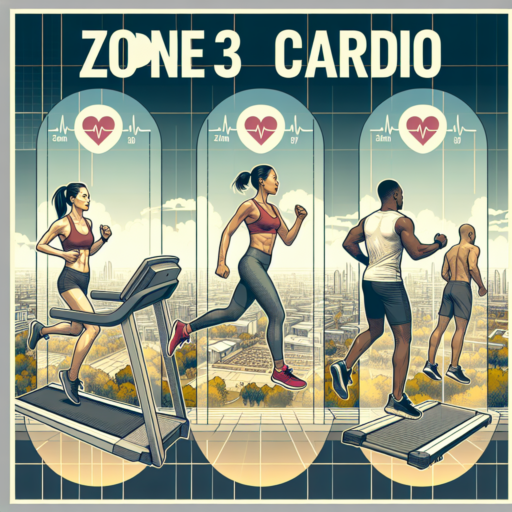Understanding the Difference Between High Aerobic and Low Aerobic Exercise
When embarking on a fitness journey, it’s essential to understand the types of exercises and how they impact our body. Aerobic exercises, often termed as cardio, are primarily divided into high and low intensity. These intensities play a crucial role in achieving various fitness goals.
High aerobic exercise, as the name suggests, requires more effort and energy but is extremely effective in improving cardiovascular health and endurance. They typically involve activities that raise your heart rate significantly. Examples include running, cycling at a fast pace, and intense swimming. These exercises are best for those looking to enhance their stamina and burn a substantial amount of calories within a shorter period.
Low aerobic exercise, on the other hand, encompasses activities that are less strenuous but can be sustained over longer periods. Walking, leisurely biking, and gentle swimming are typical examples. They are particularly beneficial for beginners, those recovering from injuries, or individuals aiming to maintain fitness without overexerting themselves. While the calorie burn might be lower than high-intensity exercises, low aerobic activities are essential for building a fitness foundation and improving overall health.
Benefits of High Aerobic Exercise for Cardiovascular Health
The role of high aerobic exercise in bolstering cardiovascular health cannot be overstated. Engaging in activities that elevate the heart rate not only strengthens the heart muscle but also significantly improves blood circulation throughout the body. This elevation in heart activity leads to a more efficient cardiovascular system, capable of delivering oxygen and nutrients to cells more effectively while simultaneously flushing out toxins.
Improved Blood Pressure is one of the most immediate benefits of high aerobic exercises. Regular participation in aerobic activities helps in dilating the blood vessels, thereby reducing the pressure required to move blood through the system. This reduction in blood pressure is beneficial for both the heart and the arterial walls, reducing the risk of hypertension and related complications.
A notable benefit of aerobic activity is the Enhancement of Heart Function. High aerobic exercises train the heart to pump blood more efficiently, increasing cardiac output without putting unnecessary strain on the heart. This training of the heart muscle aids in preventing cardiovascular diseases, including heart attacks and heart failure.
Exploring Low Aerobic Exercises: Advantages for Beginners
When it comes to embarking on a fitness journey, beginners often face a daunting challenge, especially when trying to find the right balance between effective and manageable exercises. Low aerobic exercises, known for their gentleness on the body and accessibility, present an ideal starting point. These types of workouts encompass activities that increase your heart rate while keeping intensity to a moderate level, making them perfect for those just stepping into the world of fitness.
One of the most significant advantages of low aerobic exercises is their ability to reduce the risk of injuries. Since these exercises are low impact, they put minimal stress on the joints, which is particularly beneficial for individuals who are overweight, elderly, or have pre-existing joint issues. Engaging in activities such as walking, cycling, or swimming can allow beginners to build endurance and strength without the fear of pushing their bodies too far too soon.
Encouraging Consistent Exercise Habits
Starting with low aerobic exercises also plays a crucial role in developing consistent exercise habits. The manageable nature of these workouts means that beginners are more likely to stick with their fitness routine, leading to long-term health benefits. Furthermore, the versatility of low aerobic exercises ensures that individuals can find an activity that they enjoy, making it easier to integrate fitness into their daily lives without feeling overwhelmed.
How to Choose Between High Aerobic and Low Aerobic Workouts to Meet Your Fitness Goals
When it comes to meeting your fitness goals, understanding the difference between high aerobic and low aerobic workouts is essential. High aerobic activities, such as running, cycling, and swimming at a vigorous pace, are designed to improve your cardiovascular endurance and can be an effective way to burn calories quickly. On the other hand, low aerobic workouts, including walking, gentle cycling, and yoga, focus more on maintaining health without putting too much strain on your body.
Deciding whether high or low aerobic workouts are better for you depends on several factors. Firstly, consider your current fitness level. If you’re new to regular exercise or are looking for a workout that’s easier on the joints, starting with low aerobic activities might be the best approach. This ensures that you build a solid fitness foundation, reducing the risk of injuries. For those who have been active and are looking to challenge themselves or improve endurance and strength, high aerobic workouts could be more beneficial.
Another important consideration is your overall fitness goal. If weight loss or improving cardiovascular health is your primary goal, high aerobic activities tend to be more effective due to their higher calorie burn rate. However, if your aim is to maintain a healthy lifestyle, manage stress, or gradually improve your fitness level without the intensity, low aerobic exercises could be more suitable. It’s crucial to align your workout intensity with your objectives to see the best results.
Remember, the key to a successful fitness regimen is consistency and enjoyment. Whether you choose high or low aerobic exercises, ensuring that you engage in activities you enjoy will help you stay motivated and committed to achieving your fitness goals.
Comparing Calories Burned: High Aerobic vs Low Aerobic Exercises
When discussing the effectiveness of aerobic exercises, a common question arises: how do high aerobic exercises compare to low aerobic ones in terms of calorie burn? It’s essential to understand that the intensity of your workout greatly influences how many calories you burn. High aerobic activities, such as running, cycling at a fast pace, or participating in an energetic dance class, significantly increase your heart rate and breathing. As a result, they tend to burn more calories in a shorter amount of time compared to their low aerobic counterparts.
Understanding High Aerobic Exercises
High aerobic exercises are characterized by their ability to raise your heart rate to approximately 70-85% of your maximum. This high-intensity level challenges your cardiovascular system, thereby increasing your metabolism and leading to a higher calorie burn. Activities such as kickboxing, sprinting, and high-intensity interval training (HIIT) are prime examples of exercises that can help you achieve a significant calorie deficit.
Low Aerobic Exercises and Calorie Burn
On the other hand, low aerobic exercises maintain your heart rate at about 50-70% of your maximum. While they are less intense, these activities, including walking, swimming at a leisurely pace, and biking on flat terrain, are still beneficial for weight management and overall health. They allow for longer workout durations, which can also contribute to a considerable calorie burn over time, albeit at a slower rate than high aerobic exercises.
In sum, the choice between engaging in high or low aerobic exercises should be influenced by your personal fitness goals, your current fitness level, and potentially, your enjoyment of the activity. High aerobic exercises offer a quick and efficient way to burn calories, making them ideal for individuals looking to lose weight or improve cardiovascular fitness rapidly. On the contrast, low aerobic exercises are perfect for those seeking less intense workout sessions, aiming for weight maintenance, or gradually improving their fitness levels without putting too much strain on their bodies.
The Impact of High Aerobic and Low Aerobic Exercises on Weight Loss
Exploring the landscape of weight loss strategies, the differentiation between high aerobic and low aerobic exercises plays a pivotal role in crafting an effective workout regimen. High aerobic activities, characterized by their fast-paced and intensity-driven nature, have been closely associated with substantial calorie burn within shorter workout durations. On the opposite spectrum, low aerobic exercises, while gentler and more sustainable over long periods, also contribute to weight reduction but at a more moderate pace.
Understanding the Energy Expenditure Dynamics
At the core of the distinction between high and low aerobic exercises is the concept of energy expenditure. High-intensity workouts such as running, cycling at high speeds, or engaging in HIIT sessions elevate the heart rate significantly, leading to greater calorie burn during the exercise itself. Conversely, activities like walking, light jogging, or casual swimming fall under low aerobic exercises, focusing on steady energy expenditure that does not dramatically spike the heart rate but still contributes to overall calorie burn.
Caloric Deficit and Weight Loss Correlation
The foundational principle in weight loss is creating a caloric deficit, where the body uses more energy than it consumes. High aerobic exercises have the advantage of creating a sizable calorie deficit in a relatively short period, offering a potentially quicker path to weight loss. However, for individuals seeking a gentler approach or those with certain physical constraints, low aerobic exercises provide a viable alternative that aligns with a gradual weight loss process, maintaining a moderate but constant calorie deficit over time.
Incorporating High and Low Aerobic Activities into Your Exercise Routine
Finding the right balance between high and low aerobic activities in your exercise routine can significantly enhance your overall fitness and health. High-intensity aerobic activities, such as running, cycling, and jumping rope, elevate your heart rate and improve cardiovascular endurance. On the other hand, low-intensity exercises like walking, swimming, and pilates focus more on sustainability, helping you to recover and prepare muscles for more intense workouts. By understanding the unique benefits of both activity levels, you can create a comprehensive workout plan that fosters balance and overall wellbeing.
Mixing high and low aerobic activities is not only beneficial for boosting your fitness level but also essential for preventing injuries and promoting long-term exercise adherence. It’s crucial to integrate both types of exercises to keep your workout routine diversified and engaging. Alternating between high and low-intensity workouts can help mitigate the risk of overtraining and reduce bodily stress, providing adequate time for muscles to repair and grow stronger. This approach ensures that you’re not continually pushing your body to its limits but rather promoting a healthy, gradual increase in fitness levels.
Planning your workout schedule to include a variety of high and low aerobic activities can seem daunting at first. However, a simple strategy is to alternate days dedicated to high-intensity exercises with days focused on low-intensity workouts. This not only helps in maintaining a balanced exercise regimen but also keeps your motivation levels high, as you’re constantly introducing new and different activities into your routine. Remember, the key to a successful fitness journey is consistency and listening to your body, adjusting your workout intensity according to how you feel.
Understanding the Risks: When to Avoid High Intensity Aerobic Workouts
High Intensity Aerobic Workouts are widely celebrated for their ability to improve cardiovascular health, boost fitness, and promote weight loss. However, these vigorous forms of exercise also come with specific risks that should not be overlooked. Acknowledging when to avoid such intense physical activities is crucial in maintaining overall well-being and preventing potential health issues.
Specific Health Conditions That Require Caution
Individuals with pre-existing health conditions such as heart disease, asthma, or high blood pressure may need to think twice before engaging in high intensity aerobic workouts. The elevated heart rate and increased demand on the cardiovascular system posed by such activities can exacerbate these conditions, leading to serious health complications. It’s essential to consult a healthcare provider for personalized advice tailored to your medical history and current health status.
The Importance of Listening to Your Body
Regardless of your fitness level, ignoring your body’s signals can lead to strain, injury, or even severe health crises. Symptoms such as dizziness, extreme shortness of breath, and chest pain are clear indicators that high intensity workouts may not be suitable for everyone. Recognizing when to pull back and opting for moderate forms of exercise can help avoid adverse effects while still contributing to physical fitness.
Additionally, individuals recovering from illness or surgery should approach high intensity aerobic workouts with caution. The body requires time to heal, and overexerting oneself during the recovery period can undo the progress made in healing. Incorporating gentle physical activity into the recovery plan, under the guidance of medical professionals, ensures a safer return to fitness.
Scientific Insights: How Different Aerobic Intensities Affect Your Body’s Physiology
The human body responds in varied and intricate ways to aerobic exercise, with the intensity of the activity playing a pivotal role in shaping these physiological responses. Understanding how different levels of aerobic intensity – from low to high – influence our body’s internal processes is crucial for optimizing health benefits, performance, and overall well-being.
Low-Intensity Aerobic Exercise: A Foundation for Endurance
Low-intensity aerobic workouts, characterized by activities such as walking or leisurely cycling, primarily engage the body’s fat reserves for energy. This aerobic zone lays the groundwork for improving cardiovascular health, enhancing blood circulation, and building endurance. By fostering a conducive environment for increased oxygen delivery to the muscles, low-intensity exercises enhance the body’s efficiency in utilizing fat as a fuel source. This foundational level of aerobic activity is also linked to reduced stress levels and improved metabolic health.
Moderate-Intensity Aerobic Exercise: Balancing Fat and Carbohydrates
As exercise intensity ramps up to a moderate level, the body begins to draw more significantly on carbohydrates, alongside fat, for energy—striking a balance between these two fuel sources. Activities that fall into this category include brisk walking, jogging, or swimming. This intensity level promotes further enhancements in cardiovascular fitness, along with a substantial increase in aerobic capacity. The shift towards greater carbohydrate usage also underscores the importance of this intensity range for improving insulin sensitivity and blood sugar management.
High-Intensity Aerobic Exercise: Maximizing Fitness Gains
Engaging in high-intensity aerobic activities, such as running at a vigorous pace, spinning classes, or competitive sports, pushes the body to its limits. This zone sees a predominant reliance on carbohydrates for immediate energy, necessitating efficient energy production and waste removal systems. The physiological adaptations from regular high-intensity exercise include improved VO2 max – the maximum amount of oxygen the body can utilize during intense exercise, enhanced muscle strength, and elevated fat oxidation post-exercise. High-intensity workouts are particularly effective for those looking to maximize fitness gains in a shorter period.
Real-Life Success Stories: Transformations Through High and Low Aerobic Exercises
The journey of personal transformation, especially regarding health and fitness, is both inspiring and incredibly motivating. For many, incorporating a mix of high and low aerobic exercises has been a game-changer in their fitness journey. These real-life success stories not only provide a glimpse into the powerful benefits of aerobic exercises but also showcase the achievable, tangible results from consistent, dedicated routines.
High-intensity aerobic exercises, such as running, jumping rope, and interval training, have propelled individuals towards rapid weight loss and significantly improved cardiovascular health. On the other hand, low-intensity exercises like walking, swimming, and cycling have offered a more sustainable, injury-free path to fitness, proving that there’s no one-size-fits-all approach to health and well-being. The success stories stemming from a blend of these exercise regimens highlight versatility and personalization in the fitness journey.
The transformative power of balancing high and low aerobic activities has been evident in stories of individuals overcoming physical and mental barriers. Whether it’s shedding significant pounds, boosting mental health, or enhancing physical endurance, the stories of real people making real progress are nothing short of inspirational. These personal achievements underline the importance of finding a routine that resonates with one’s lifestyle and goals, emphasizing that the key to a successful fitness journey lies in the harmony between high-energy bursts and low-intensity sustainability.










